- Cultivation of Oenothera in the Garden
- Choose the Right Location
- Prepare the Soil
- Planting
- Watering
- Maintenance
- Propagation
- Pests and Diseases
- Choosing the Right Location for Oenothera
- Sunlight
- Soil Type
- Moisture
- Temperature
- Space
- Shelter
- Companion Plants
- Soil Requirements for Growing Oenothera
- 1. Well-drained soil
- 2. Sandy or loamy soil
- 3. Neutral to slightly acidic pH
- 4. Fertile soil
- 5. Sun exposure
- Watering and Fertilizing Oenothera
- Watering
- Fertilizing
- Pruning and Maintenance of Oenothera
- 1. Pruning
- 2. Deadheading
- 3. Watering
- 4. Fertilizing
- 5. Maintenance
- Common Species of Oenothera
- 1. Oenothera biennis (Common Evening Primrose)
- 2. Oenothera fruticosa (Sundrops)
- 3. Oenothera speciosa (Pink Evening Primrose)
- 4. Oenothera caespitosa (Tufted Evening Primrose)
- 5. Oenothera macrocarpa (Missouri Evening Primrose)
- Conclusion
- Questions and Answers:
- What is Oenothera?
- What are the different species of Oenothera?
- How do I cultivate Oenothera in my garden?
- What are some common problems with growing Oenothera?
- What are the benefits of growing Oenothera in the garden?
- Can Oenothera be grown in containers?
- Videos: How to Grow Evening Primrose from Seed
The Evening Primrose, scientifically known as Oenothera, is a stunning flowering plant that is native to North America. It belongs to the family Onagraceae and includes about 145 species. This plant gets its name from the fact that its flowers open in the evening, producing a beautiful display of color and fragrance.
Oenothera is a popular choice among gardeners due to its vibrant flowers and ease of cultivation. The plant prefers well-drained soil and thrives in full sun, although some species can tolerate partial shade. It is a hardy plant that can survive in various climates, making it suitable for different gardening regions.
One of the most commonly grown species of Oenothera is Oenothera biennis, or the Common Evening Primrose. This species is known for its bright yellow flowers that bloom throughout the summer. Another popular species is Oenothera fruticosa, or the Sundrops, which produces clusters of yellow flowers and has a more compact growth habit.
In addition to their visual appeal, Evening Primroses also possess medicinal properties. The oil extracted from their seeds contains high levels of gamma-linolenic acid (GLA), which is beneficial for skin health and hormonal balance. These plants have been used traditionally in herbal medicine to treat a variety of ailments, including acne, eczema, and premenstrual syndrome.
Whether you are looking to add a splash of color to your garden or harness the medicinal properties of Evening Primroses, these plants are a fantastic choice. With their striking blooms and easy cultivation, Oenothera species are sure to delight both gardeners and nature enthusiasts alike.
Cultivation of Oenothera in the Garden
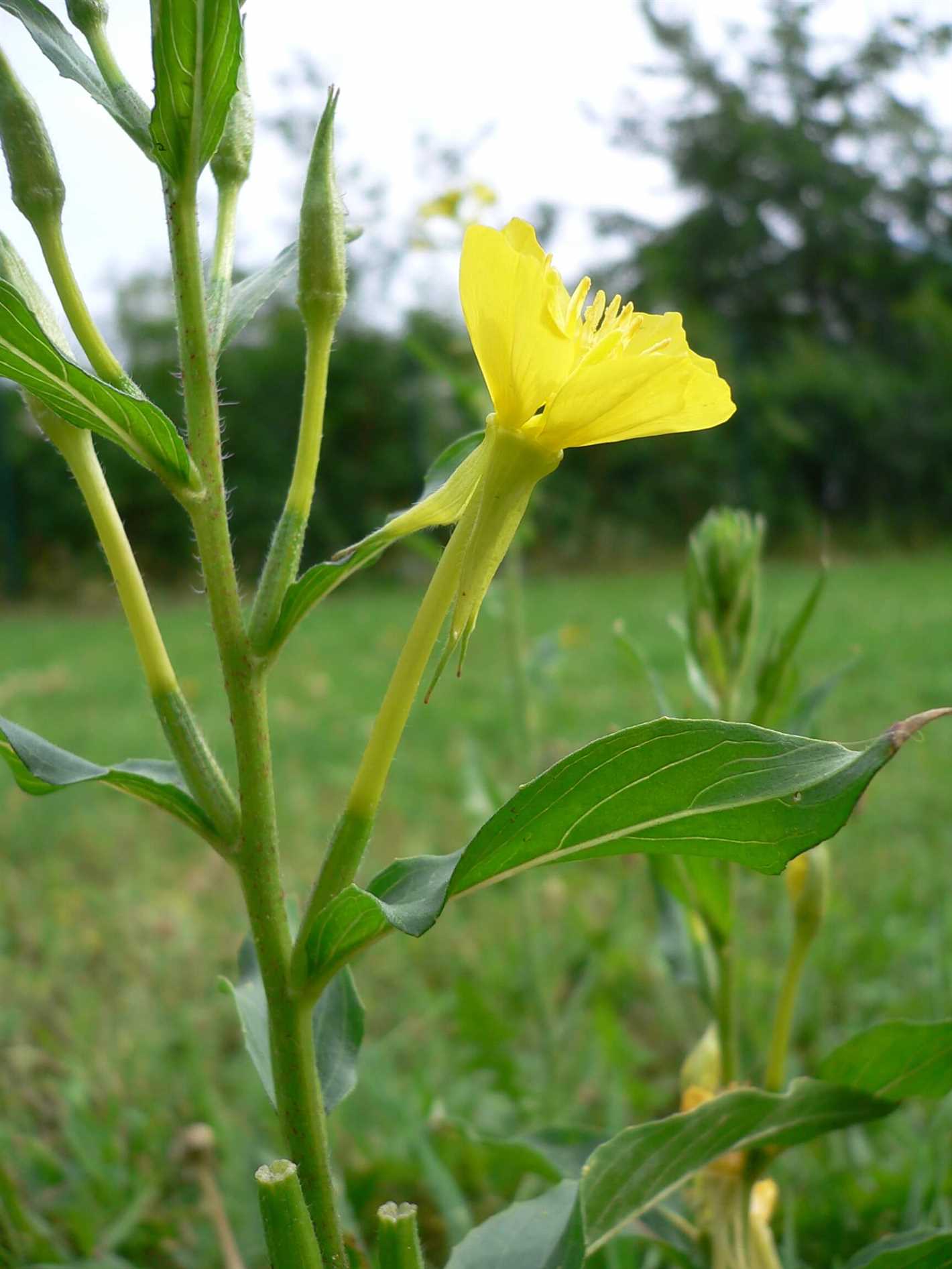
Oenothera, commonly known as evening primrose, is a beautiful and vibrant flowering plant that can be a great addition to any garden. With its striking yellow flowers that bloom in the evening, it can add an enchanting touch to your outdoor space. Here are some tips on how to cultivate Oenothera in your garden:
Choose the Right Location
Oenothera thrives in full sun, so choose a location in your garden where it will receive at least 6 hours of direct sunlight each day. The soil should be well-draining and rich in organic matter.
Prepare the Soil
Before planting, prepare the soil by removing any weeds or debris. Loosen the soil and amend it with compost or well-rotted manure to improve its fertility and drainage.
Planting
Plant Oenothera in early spring or fall, when the temperatures are cooler. Dig a hole that is slightly wider and deeper than the root ball of the plant. Place the plant in the hole, making sure it is at the same level as it was in its pot. Backfill the hole with soil, gently firming it around the plant.
Watering
Water Oenothera regularly, especially during dry periods. Keep the soil consistently moist but not waterlogged. Avoid overhead watering, as this can lead to disease. Water at the base of the plant to prevent splashing of soil onto the leaves.
Maintenance
Oenothera is a low-maintenance plant, but it can benefit from some care. Deadhead the spent flowers to encourage continuous blooming. Divide the plant every few years to prevent overcrowding. Mulch around the plant to conserve moisture and suppress weeds.
Propagation
Oenothera can be propagated by division or from seeds. To propagate by division, carefully dig up the plant and divide the clumps into smaller sections, making sure each section has roots attached. Replant the divisions in prepared soil. To propagate from seeds, collect the ripe seed capsules and sow them directly in the garden or in pots filled with seed-starting mix.
Pests and Diseases
Oenothera is generally resistant to pests and diseases. However, it can occasionally be affected by aphids, slugs, or powdery mildew. Monitor the plants regularly and take appropriate measures if any issues arise.
By following these cultivation tips, you can enjoy the beauty and charm of Oenothera in your garden. Whether you choose to plant it in borders, rock gardens, or containers, this versatile plant is sure to bring joy to your outdoor space.
Choosing the Right Location for Oenothera
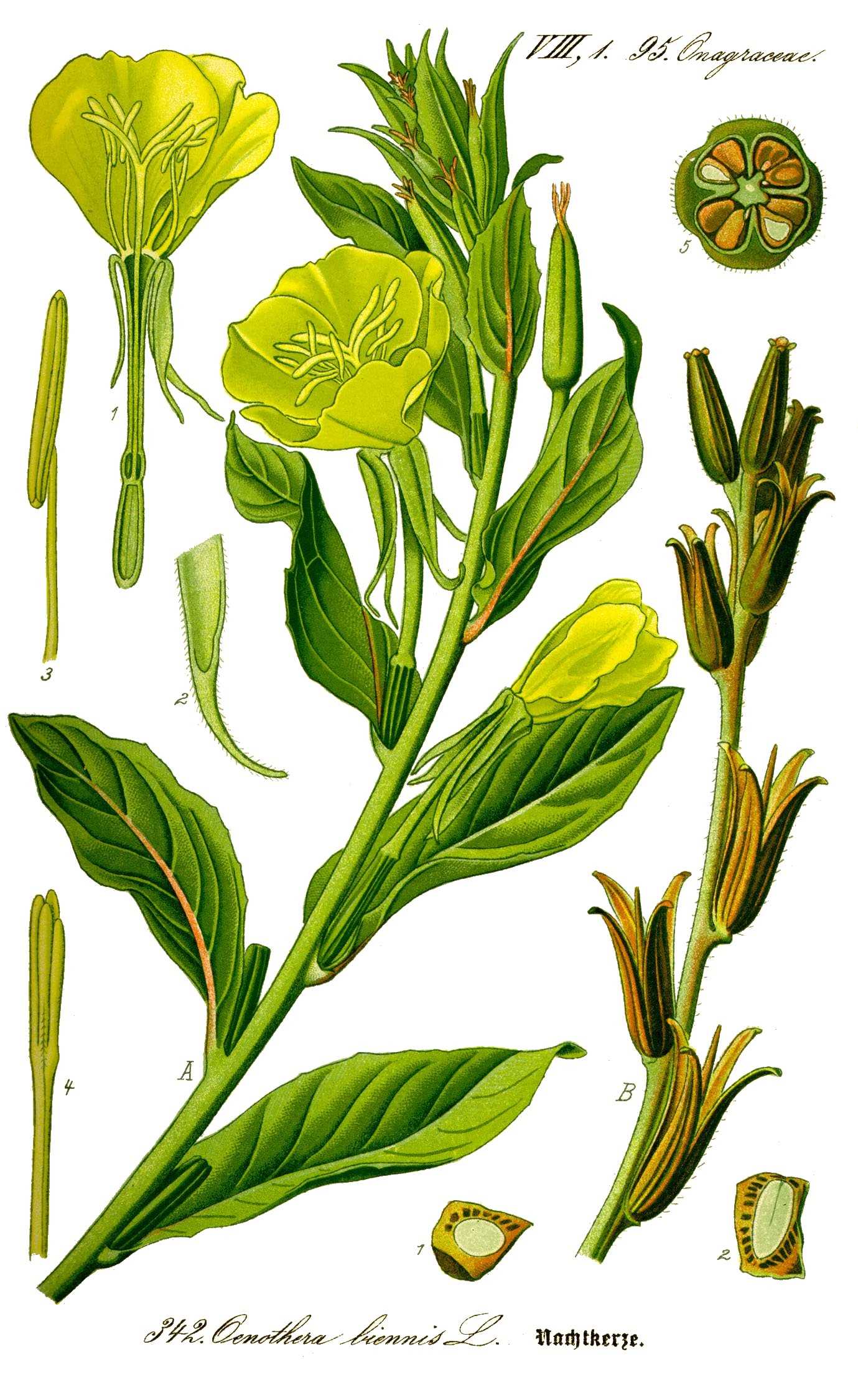
When selecting a location for planting Oenothera (Evening Primrose), it is important to consider the specific needs of this plant in order to promote optimal growth and flowering. Here are some factors to consider when choosing the right location:
Sunlight
Oenothera thrives in full sun conditions, requiring at least 6 to 8 hours of direct sunlight each day. Choose a location that receives ample sunlight throughout the day, as this will encourage the plant to produce more blooms.
Soil Type
Evening Primroses prefer well-drained soil that is rich in organic matter. They can tolerate a wide range of soil types, including sandy, loamy, and clay soils, but they do best in moderately fertile soil. Prior to planting, it is advisable to amend the soil with compost or well-rotted manure to improve its fertility and drainage.
Moisture
Although Evening Primroses are drought-tolerant once established, they still require regular watering during their initial growth stages. Choose a location that allows for easy access to water and avoids areas that are prone to excess moisture or waterlogging.
Temperature
Oenothera plants are hardy in USDA hardiness zones 3 to 9, and their specific temperature requirements can vary depending on the species. While most varieties can tolerate a wide range of temperatures, it is advisable to check the specific temperature requirements of the species you are planting to ensure it can withstand the climate in your area.
Space
Oenothera plants can spread and form dense colonies over time, so it is important to allow enough space for them to grow and expand. Make sure the chosen location has enough room for the plants to spread without crowding or competing with other nearby plants.
Shelter
While not necessary, evening primroses can benefit from some shelter from strong winds, as excessive wind can have a drying effect on the plants. If your garden is particularly windy, consider planting Oenothera near a fence, wall, or other windbreak to provide some protection.
Companion Plants
Oenothera can be a great addition to gardens, as they attract pollinators and beneficial insects. Consider planting them alongside other pollinator-friendly plants, such as lavender, bee balm, or coneflowers, to create a vibrant and beneficial garden ecosystem.
By considering these factors when choosing a location for Oenothera, you can create an ideal growing environment for these beautiful and hardy plants in your garden.
Soil Requirements for Growing Oenothera
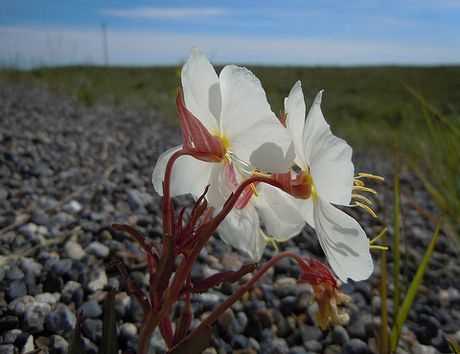
Oenothera, commonly known as Evening Primrose, has specific soil requirements for optimal growth and development. The following are the key factors to consider when choosing the right soil for growing Oenothera:
1. Well-drained soil
Oenothera thrives in soil that is well-drained to prevent waterlogging. Standing water can cause root rot and other issues, so it is important to ensure that the soil drains well. If your soil tends to hold water, you can improve its drainage by adding organic matter, such as compost or well-rotted manure.
2. Sandy or loamy soil
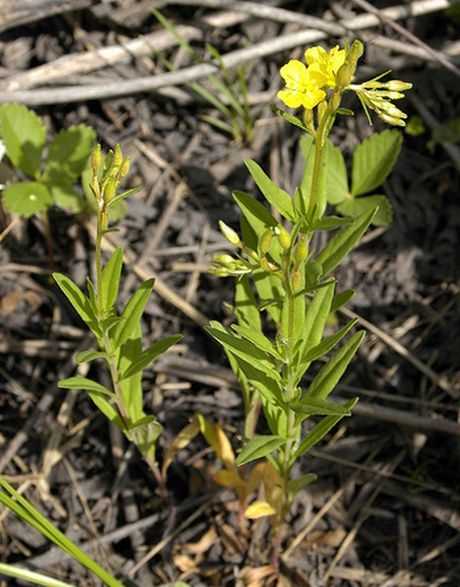
Oenothera prefers sandy or loamy soil with good moisture retention. These types of soil provide good drainage while also retaining enough moisture for the plant’s needs. If your soil is heavy clay, you can improve its texture by adding sand or organic matter.
3. Neutral to slightly acidic pH
Oenothera generally prefers soil with a neutral to slightly acidic pH level of 6.0 to 7.0. You can test your soil’s pH level using a soil testing kit and adjust it accordingly. If the pH is too alkaline, you can lower it by adding sulfur or other suitable soil amendments.
4. Fertile soil
Oenothera benefits from moderately fertile soil that is rich in organic matter. Adding compost or well-rotted manure to the soil before planting can provide the necessary nutrients for healthy growth and blooming.
5. Sun exposure
Oenothera thrives in full sun and requires at least 6 hours of direct sunlight per day. Therefore, it is important to choose a location in your garden where the plant will receive ample sunlight.
By ensuring that the soil meets these requirements, you can create an ideal growing environment for Oenothera and enjoy beautiful blooms throughout the growing season.
Watering and Fertilizing Oenothera
Watering
Oenothera plants, including Evening Primrose, require regular watering to thrive. However, they are also sensitive to overwatering, so it is important to strike a balance. Here are some watering tips for Oenothera:
- Water the plants deeply once or twice a week, providing enough water to thoroughly moisten the soil.
- Make sure the soil is well-drained to prevent waterlogging, as Oenothera plants are susceptible to root rot.
- Monitor the moisture level of the soil by sticking your finger into it. Water only if the top inch of soil feels dry.
- Water the plants in the morning or early afternoon, allowing enough time for the foliage to dry before evening. This helps prevent the development of fungal diseases.
Fertilizing
Fertilizing Oenothera plants can help promote healthy growth and abundant flowering. Here are some fertilizing tips for Oenothera:
- Apply a balanced slow-release fertilizer, such as a 10-10-10 or 12-12-12 formula, in early spring as the new growth begins.
- Follow the instructions on the fertilizer package for the correct application rate.
- Avoid over-fertilizing, as excessive nutrients can lead to leafy growth and reduced flower production.
- For container-grown Oenothera, use a liquid fertilizer diluted to half strength and apply every two weeks from spring to early summer.
Remember to always water the plants before applying fertilizer to avoid root burn.
Pruning and Maintenance of Oenothera
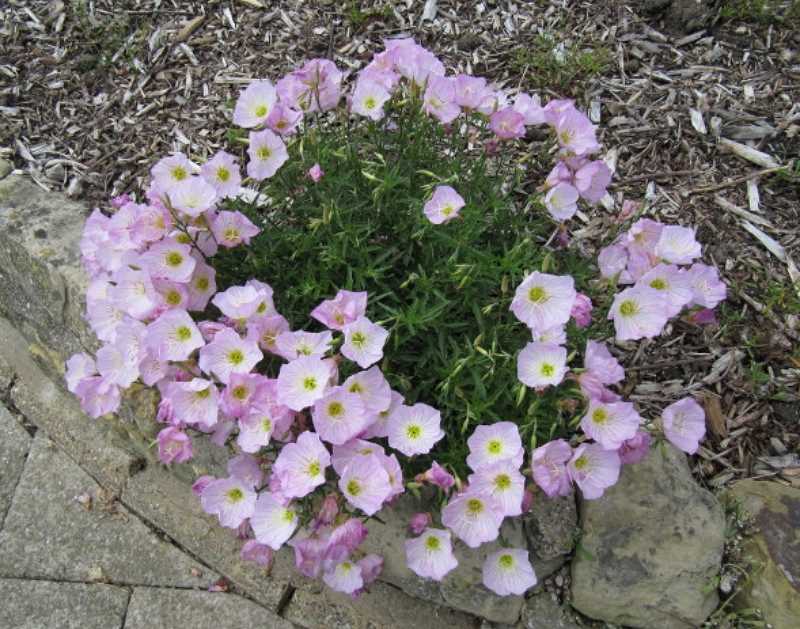
Oenothera, commonly known as Evening Primrose, is a beautiful and versatile plant that can thrive in a variety of garden settings. To keep your Oenothera plants healthy and looking their best, regular pruning and maintenance is essential. Here are some tips to help you care for your Oenothera:
1. Pruning
To encourage healthy growth and maintain a compact shape, it is recommended to prune Oenothera plants regularly. Pruning should be done in early spring, before new growth begins.
- Start by removing any dead or damaged branches and stems.
- Trim back any overgrown or unruly branches to promote a more compact growth habit.
- Remove any weak or thin stems to improve the overall strength and structure of the plant.
2. Deadheading
To promote continuous blooming and prevent self-seeding, it is important to deadhead the spent flowers of Oenothera regularly.
- Use a sharp pair of scissors or pruning shears to remove the faded flowers.
- Cut the stem just above a healthy leaf node or bud to encourage new growth.
- Deadheading should be done throughout the blooming season to ensure a long-lasting display of flowers.
3. Watering
Oenothera plants have moderate water needs. It is important to water them regularly, especially during dry periods.
- Water deeply and thoroughly, ensuring that the soil is evenly moist but not waterlogged.
- Avoid overhead watering, as it can promote the spread of diseases.
- Watering in the early morning or late afternoon is ideal, as it allows the foliage to dry before evening.
4. Fertilizing
Oenothera plants generally do not require much fertilizer. However, they can benefit from a small amount of balanced fertilizer applied in early spring.
- Use a slow-release fertilizer or a well-balanced organic fertilizer.
- Follow the manufacturer’s instructions for application rates.
- Avoid over-fertilizing, as it can lead to excessive foliage growth at the expense of flowers.
5. Maintenance
Regular maintenance tasks for Oenothera plants include:
- Removing any weeds or competing plants that may be growing nearby.
- Inspecting the plants for any signs of pests or diseases and taking appropriate action if necessary.
- Dividing overcrowded clumps every few years to maintain plant vigor.
- Replacing old or tired plants with new ones to ensure a continuous display of flowers.
By following these pruning and maintenance tips, you can keep your Oenothera plants healthy and vibrant, ensuring a beautiful display of flowers in your garden.
Common Species of Oenothera
Oenothera, commonly known as evening primrose, is a genus of flowering plants that belong to the family Onagraceae. There are several common species of Oenothera that are cultivated in gardens for their beautiful flowers and medicinal properties.
1. Oenothera biennis (Common Evening Primrose)
Oenothera biennis, also known as common evening primrose, is a biennial plant native to North America. It grows up to 6 feet tall and produces bright yellow flowers that open in the evening, hence the name evening primrose. The flowers are fragrant and attract pollinators like bees and butterflies.
The leaves of Oenothera biennis are lanceolate in shape and grow in a rosette pattern at the base of the plant. The plant blooms from early summer to fall and the flowers give way to seed capsules that contain numerous small black seeds. The oil extracted from the seeds is rich in gamma-linolenic acid (GLA) and is used in herbal medicine for its anti-inflammatory and healing properties.
2. Oenothera fruticosa (Sundrops)
Oenothera fruticosa, commonly known as sundrops, is a perennial plant native to North America. It forms a clump of upright stems that grow up to 3 feet tall and produces bright yellow flowers that open during the day. The flowers are followed by seed capsules that contain numerous small black seeds.
Sundrops prefer full sun and well-draining soil. They are drought-tolerant and can thrive in various soil types. The plant has a long blooming season, starting from early summer and lasting until fall. It is a popular choice for garden borders and rock gardens due to its attractive flowers and low maintenance requirements.
3. Oenothera speciosa (Pink Evening Primrose)
Oenothera speciosa, also known as pink evening primrose, is a perennial wildflower that is native to the southern and central United States. It has a spreading habit and forms a low mound of hairy leaves. The plant produces pink or white flowers that open in the evening and remain open throughout the day.
Pink evening primrose is a hardy plant that can tolerate a wide range of soil conditions, but it prefers well-draining soil. It is often used as a ground cover in gardens due to its ability to form dense mats of foliage. The flowers attract pollinators like bees and butterflies, making it a valuable plant for wildlife gardens.
4. Oenothera caespitosa (Tufted Evening Primrose)
Oenothera caespitosa, commonly known as tufted evening primrose, is a perennial plant native to western North America. It forms a low tufted mound of leaves and produces large white or pink flowers that open in the evening and close by mid-morning.
Tufted evening primrose prefers well-draining soil and full sun. It is drought-tolerant once established and can tolerate a wide range of soil conditions. The plant is often used in rock gardens and xeriscapes due to its low water requirements and showy flowers.
5. Oenothera macrocarpa (Missouri Evening Primrose)
Oenothera macrocarpa, commonly known as Missouri evening primrose, is a perennial plant native to central and western North America. It forms a low spreading mound of hairy leaves and produces large yellow flowers with four petals.
Missouri evening primrose prefers full sun and well-draining soil. It is drought-tolerant and can survive in poor soil conditions. The plant blooms from late spring to early summer and the flowers give way to large seed capsules that contain numerous small black seeds.
Conclusion
These are just a few of the common species of Oenothera that are cultivated in gardens. Each species has its own unique characteristics and requirements, but all of them are prized for their beautiful flowers and ability to attract pollinators. Whether you’re looking for a vibrant yellow evening primrose or a low-growing pink ground cover, there is a species of Oenothera that will suit your garden needs.
Questions and Answers:
What is Oenothera?
Oenothera, commonly known as evening primrose, is a genus of flowering plants in the family Onagraceae.
What are the different species of Oenothera?
There are over 100 species of Oenothera, including Oenothera biennis, Oenothera speciosa, Oenothera missouriensis, and Oenothera fruticosa.
How do I cultivate Oenothera in my garden?
To cultivate Oenothera in your garden, choose a sunny spot with well-drained soil. Plant the seeds or seedlings in the spring after the last frost. Water regularly and provide some fertilizer. Deadhead the flowers to promote continuous blooming.
What are some common problems with growing Oenothera?
Some common problems with growing Oenothera include powdery mildew, aphid infestations, and root rot. Monitor your plants regularly and take appropriate measures to prevent or treat these issues.
What are the benefits of growing Oenothera in the garden?
Growing Oenothera in the garden can attract butterflies and other beneficial insects. The colorful flowers also add beauty and charm to the landscape. Oenothera is also known for its medicinal properties and can be used in herbal remedies.
Can Oenothera be grown in containers?
Yes, Oenothera can be grown in containers. Use a well-draining potting mix and choose a container that is deep enough to accommodate the plant’s root system. Water regularly and provide some fertilizer to ensure healthy growth.







